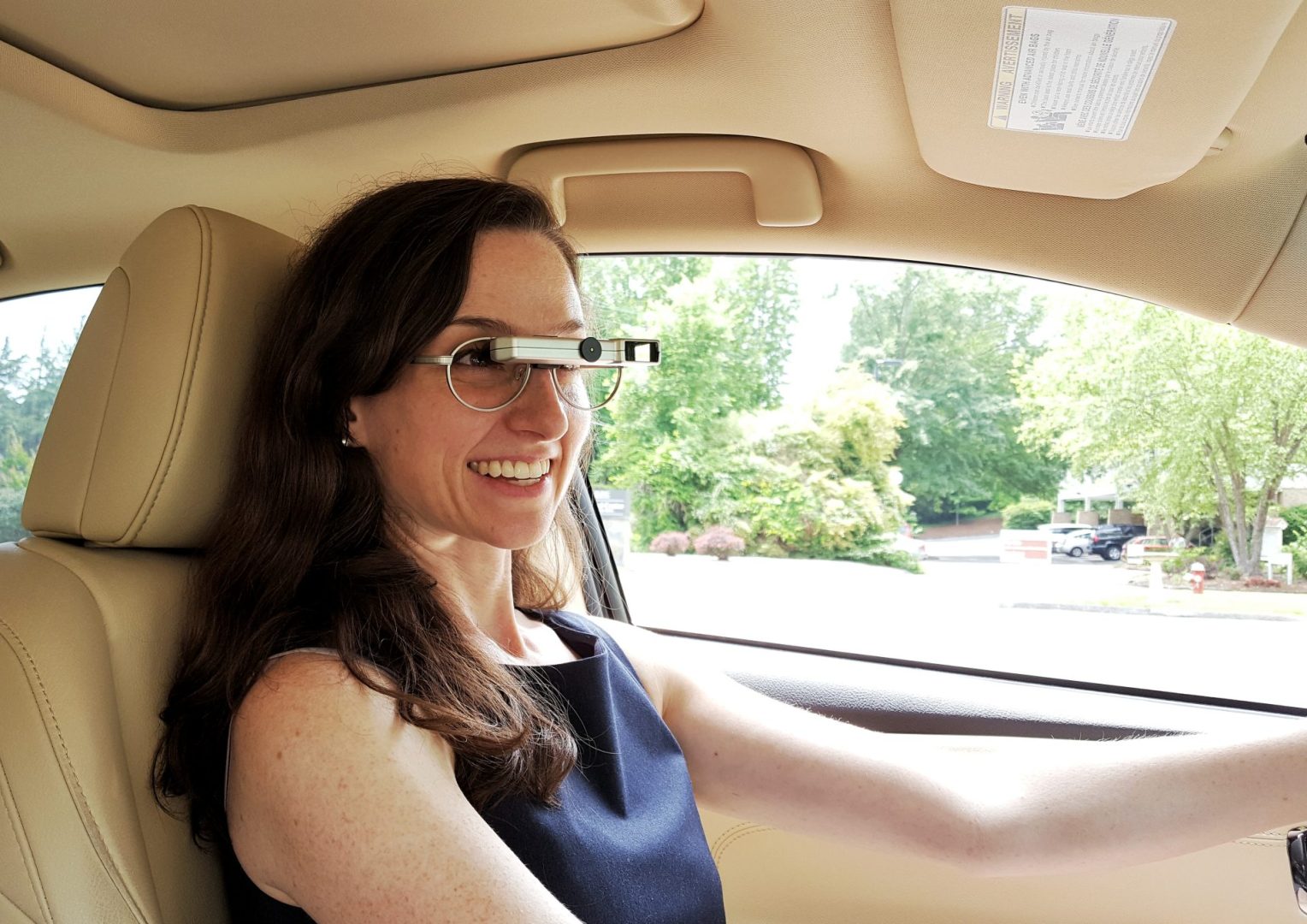Please be advised USPS is experiencing unusually long delays for Free Matter For The Blind shipping. If you have not received an order placed more than 30 days prior, please contact the APH Customer Service team at support@aph.org or 1-800-223-1839.
CloseSeeing Through Someone Else’s Eyes: Bioptic Lenses Pave the Way for Bioptic Driving

Have you ever seen someone who had glasses with what looked like miniature telescopes attached to the lenses? A special device for people who are blind or low vision, bioptic lenses are a regular set of glasses with a telescope at the top that you can look into to see signs, stop lights, or anything else that you need to view more clearly or closely. Typically, the scope is mounted on the right or left side, depending on which eye has better vision. Some people have scopes on both sides. Using bioptic glasses allows a legally blind or low vision driver to operate a motor vehicle. This is called bioptic driving.
Although bioptic driving was officially recognized in the United States over thirty years ago, laws still vary from state to state, and a special bioptic driving license is needed. For example, according to biopticdrivingusa.com, you must have 20/60 visual acuity through the bioptic telescope in the state of Kentucky, while the state of California requires your bioptic telescope visual acuity to be 20/40 or better. Some states won’t allow bioptic driving licenses at all.
Amanda Dennis, Engagement Specialist at APH, utilizes bioptic lenses and shared about her experience with bioptic driving. Initially, she wasn’t interested in getting a bioptic driving license or driving in any way, shape, or form. “Growing up in Peachtree City we had a golfcart I could always drive wherever I wanted to go,” she says. “I didn’t know if I really wanted to drive or not since there wasn’t a place that I needed or wanted to go outside of where I was.” Her parents encouraged her, though, reminding her that they weren’t going to drive her around forever.
Now, she says she’s glad she did get her bioptic driving license, noting that the independence of being able to transport yourself wherever you need to go is a “game changer.” “There are so many times where having to rely on public transportation or other modes of transportation and other people to get around and do what you need to do is inconvenient,” she says. “Especially later in life when you have kids. It would be very difficult to always have to rely on public transportation with a child. Having the ability to hop into a car and drive myself to a store…that’s really helpful.”
Are there any challenges to bioptic driving? Amanda says that while being out alone on the road can be difficult in and of itself, it really depends on your eye condition. “Most people who use bioptic driving are legally blind, which means they are operating a vehicle with their normal vision and they’re not always using the telescope,” she says. “They might use it to look at signs or streetlights to see if it’s red or green, but you’re really relying on the fact that the training was enough.” Amanda says that bioptic drivers have to drive very defensively as other drivers are one of the biggest dangers on the road. “You might not always be confident with where you’re going or what you’re doing at first, but you gain confidence over time.”
Usually consisting of a training process and evaluation, bioptic driving candidates typically have to dedicate eight weeks to going to training school every day and will spend up to 90 hours on the road. “If you want to drive when it’s dark, you have to take classes in the evening to see how you drive at night. They also like to see if you have any issues with shadows, light sensitivity, etc.,” she says. “The whole process can take up to a couple of years.” Each year, those who hold a bioptic driving license are required to have an evaluation at an eye doctor to test their vision with and without their bioptic lenses to be sure that they still meet the state’s vision standards.
“It’s important to know your limits,” Amanda says. “Generally speaking, bioptic drivers aren’t going to take a ten-hour road trip. They’re usually driving to the places they’re used to going throughout their normal day, such as the grocery store, or their route to work.” While there are no limitations on how far you can drive with bioptic driving, Amanda knows that she can’t drive more than two hours before her vision starts to get blurry. Her brother, who has much better vision than she does, finds driving in the dark just fine, while she prefers not to drive after dark. “You have to figure out what works and doesn’t work for you,” she says. “It’s different for everyone.”
While the process of getting your bioptic driving license can be extensive, Amanda says it’s well worth it. “Being able to have bioptics is such a basic thing. It’s so great to be able to have them,” she says. “I went through a lot to get my bioptic lenses and now I feel comfortable transporting myself to a lot of different places.”
